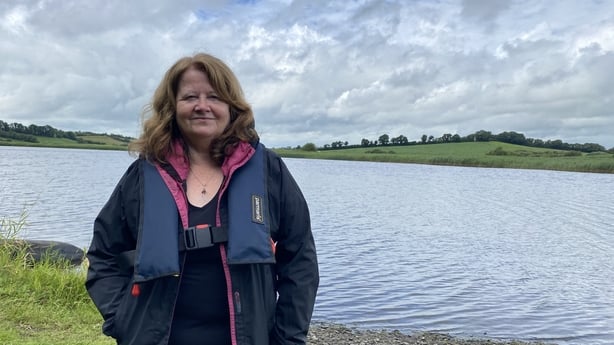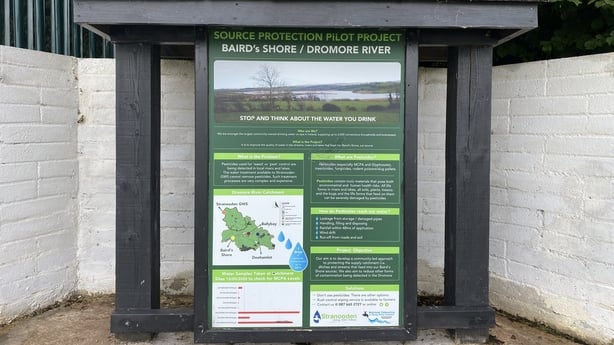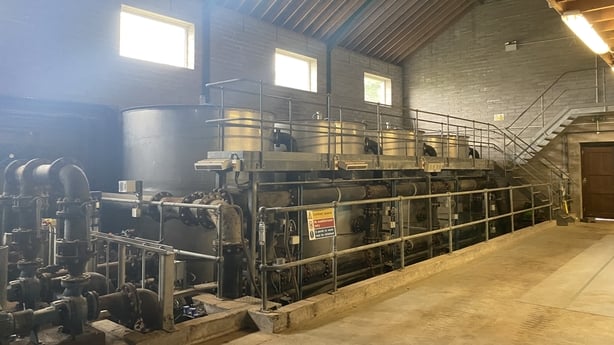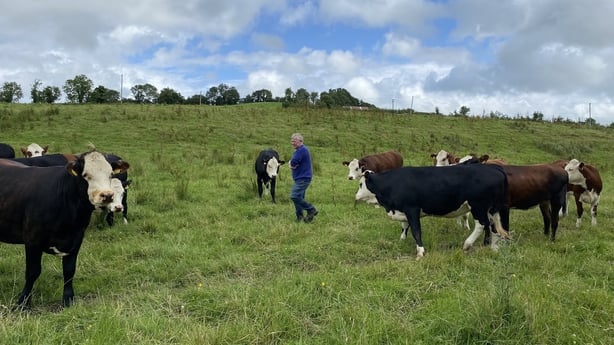A marine heatwave around Ireland, as well as high water temperatures in the River Moy, are some of the climate-related stories to hit headlines on Irish shores in recent weeks. But the impact of climate change is also felt in Ireland's many lakes.
A professor from the Centre for Freshwater and Environmental studies at Dundalk Institute of Technology has said that a warming trend in Irish lakes is evident and is expected to get worse.
Professor Eleanor Jennings has been modelling the impact of global warming and climate change on freshwater systems for the last 25 years.
"We know that temperatures are increasing over time, and particularly we are getting more extreme heatwaves, lake heatwaves," she said.

She said that a combination of warmer water, and nutrients from phosphates and nitrates getting into the water, are the two main pressures on Irish lakes at the moment.
Prof Jennings said that projections she was working on when she first started out have already happened.
"When I started running these models, it seemed to me that’s a long time into the future. But we are there now," she said.
The centre carried out research during the 2018 heatwave, which found that surface water temperatures across lakes in Ireland increased by between 1.5C and 2.5C.
"That mightn’t sound like much, but they’re the kind of temperatures that can have a big effect on what is living in the lake.
"What we’re projecting for the future, what these models tell us, is that could be up to between 4C and 6C in the future," she said.
"So they’re massive temperature changes, and they’re going to effect the quantity of the water we have and the quality of the water we have available to us."
Algal blooms
This warming can lead to a layering or "stratification" effect in the lakes.
Prof Jennings likens this to a hot water tank - where the water stays hot at the top, and cool at the bottom.
"That is a layering effect that happens every year, to some degree. But what happens then is that everything in the top stays there, and everything in the bottom remains at the bottom," she said.
This temperature increase, she said, combined with nutrients getting into the lake, can result in the formation of the blue-green coloured toxic algal blooms.
"These particular plant species like warm, calm and a lot of nutrients. When all that comes together, it’s like a perfect storm. They proliferate and produce toxins into the water, that can be absorbed through skin, drinking water or even by inhalation."

What can be done to stop this type of algal bloom forming on Ireland’s lakes?
"At this point, there are a lot of reports that we are at a tipping point for global warming. Even if we do everything we can now, we can reduce it maybe in 10-20 years' time. But things are going to get warmer," she said.
She added: "But we can ensure our lakes are as clean as possible, by preventing phospates and nitrates getting into the lake because that fertilises those fresh water algal blooms."
Prof Jennings said that the blooms die within days, dropping to the bottom of the lake creating another layer blocking oxygen from getting in.
"As the layer stays in place, the bottom of the lake becomes anoxic, so there’s no oxygen for fish or anything else, and the problem then is that it results in fish species dying and it can decimate populations," she said.
Drinking water
Lakes are also the source of much of Ireland’s drinking water supply.
In Co Monaghan, a local group water scheme is focused on protecting the source and improving water quality along the way.
Stranooden Group Water Scheme is one of the biggest in the country, bringing water to more than 1,300 homes and 450 farms and commercial premises.
Water from Baird’s Shore near Ballybay is pumped 9km away to the Stranooden treatment plant.
"The better the quality of the water at the source, the easier and less costly it is to treat it as an end product," said source protection officer Ross McDonald.

Phosphates, pesticides, and the Drumlin landscape of Co Monaghan, which makes it more susceptible to "run off", are the biggest challenges.
Mr McDonald said these substances can come from organic fertilisers, septic tanks or municipal wastewater treatment plants, and they feed the water something it does not need, leading to those harmful algal blooms.
"It’s about keeping that out," he said.
To mitigate against this, Stranooden Group Water Scheme has been creating "buffer zones" along the Dromore river, that feeds into Baird Lake.
Mr McDonald said the scheme has been working with farmers who own the land alongside the river.
"We’re trying to find solutions that work for the farmer and work for us, who want to protect the water. It is the same water they drink out of their tap every day, so there’s a vested interest in trying to make the water as potable as possible," he said.
The scheme has strategically installed these "buffer zones" at key points along the river. This involves fencing off 15km of agricultural land, which prevents livestock getting access to the water.
They have also introduced extensive planted areas with trees such as Willow and other vegetation along the riverbanks.
These plants will soak up the extra nutrients from the ground before they have a chance to reach the water, a measure that has also helped to promote biodiversity.
'Critical' work
Prof Jennings described the work that Stranooden Group Water Scheme has been doing as "critical" and said that source protection measures were a "win win" for everybody.
"For years we’ve tried the legislative route. Sometimes that doesn’t always have the desired effect.
"But I think when people in a local community know what is happening with their water source, and they are willing to take ownership of that and particularly the group water schemes are very good at doing that, it gets the message home to people: that what I’m putting on my land or what is happening in my part of the catchment effects everybody downstream," she said.

Farmer Trevor Jenkins has a mixed dairy and beef farm in Stranooden and the Dromore River runs alongside his farm.
He is one of the farmers to have worked with the group water schemes, to help improve and protect the water quality.
He said allowing the scheme to install a buffer zone between his farm and the river was the "easiest decision" he ever made.
Mr Jenkins said that the fencing and planting keeps the cattle away from the river and that the fencing saved him a lot of work.
"I encourage other farmers to do this because at the end of the day, it’s their own drinking water," he said.





